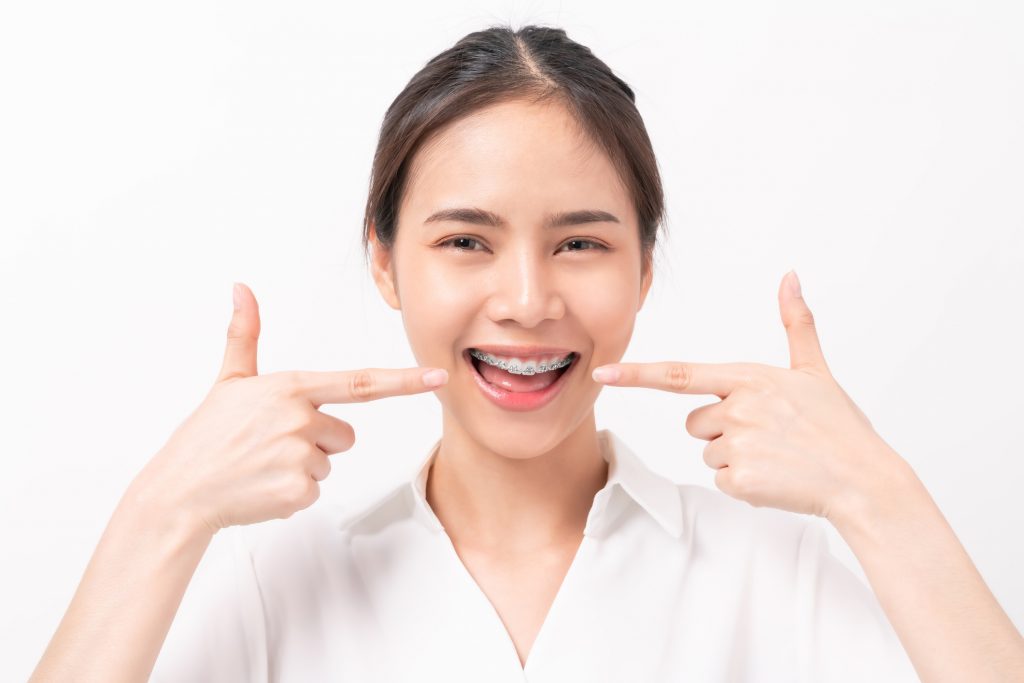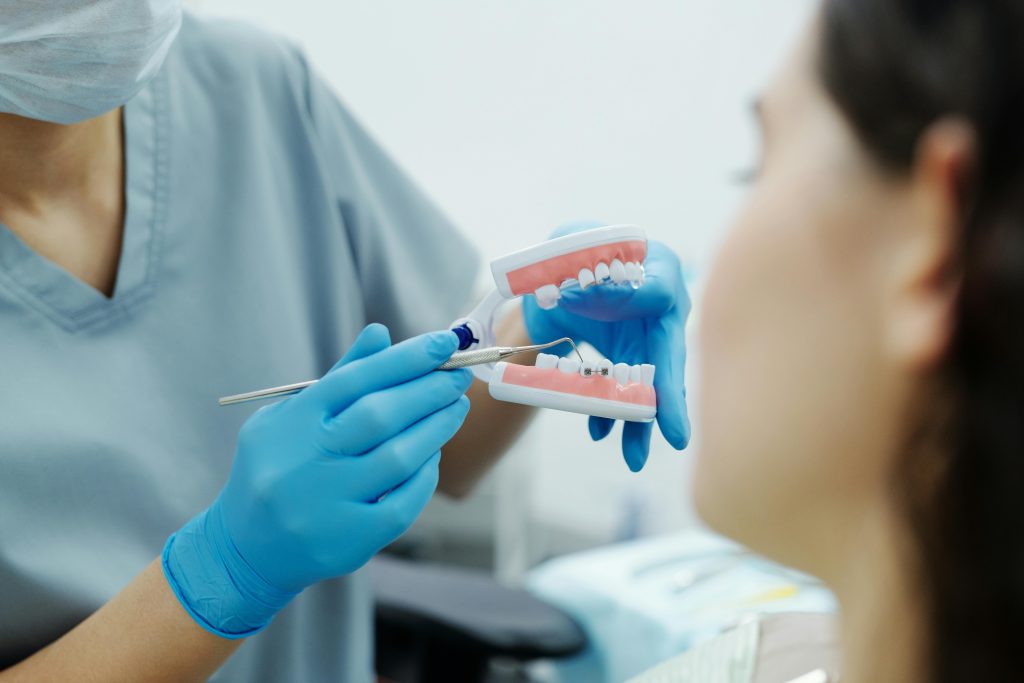Have you ever wondered about braces slightly different from the usual ones? That’s where self-ligating braces come in. In this blog post, we will talk about five key facts about self-ligating braces — essential details you need to know about their history, how they work, and whether they might be the right fit for you. Let’s get into the basics of self-ligating braces and find out what makes them unique in fixing smiles.
History of Self-ligating Braces
The development and refinement of self-ligating braces involved contributions from various orthodontic professionals over time, and it’s challenging to attribute their invention to a single individual. However, Dr. Larry Andrews is often credited with introducing the first commercially available self-ligating bracket system in the 1930s. His design, known as the “Damon bracket,” was a significant step in the evolution of self-ligating braces.
Dr. Dwight Damon later advanced the design, and his company, Ormco Corporation, introduced the Damon System, which gained popularity in the orthodontic field. The Damon System utilised self-ligating brackets and low-friction mechanics to achieve efficient tooth movement.
It’s essential to recognize that the field of orthodontics is collaborative, with continuous advancements made by multiple researchers and practitioners. The evolution of self-ligating braces involves the work of various professionals over several decades, and it continues to be an area of ongoing research and development.
Mechanism for Wire Control
Self-ligating braces are orthodontic braces that differ from traditional braces in how they hold and secure the archwire. Unlike traditional braces, which use ligatures (elastic bands or metal ties) to keep the archwire in place, self-ligating braces have a built-in mechanism within each bracket to secure the wire. This mechanism eliminates the need for external ligatures.
There are two primary types of self-ligating mechanisms:
Active Clip Mechanism
In self-ligating braces with an active clip mechanism, each bracket contains a small, movable door or clip that opens and closes to secure the archwire. The orthodontist can open the clip during adjustments and then close it, allowing it to hold the wire firmly in place.
Passive Slide Mechanism
In self-ligating braces with a passive slide mechanism, the bracket has a small metal or ceramic door that is passive and doesn’t actively open and close. Instead, the archwire is inserted into the bracket through a small slot, and the door passively holds the wire in place. There may be a small locking mechanism to ensure the wire stays secured.
In both cases, the fundamental principle is that these self-ligating mechanisms eliminate the need for ligatures commonly used in traditional braces to tie the archwire to each bracket. This design reduces friction between the archwire and the brackets, potentially allowing for more efficient tooth movement and, in some cases, a more comfortable orthodontic experience.
It’s important to note that there are different brands and designs of self-ligating braces, so the specific details of the mechanism can vary.
Easy Maintenance and Oral Hygiene
Self-ligating braces improve oral hygiene by eliminating the need for ligatures, elastic bands or metal ties commonly used in traditional braces. This design minimizes potential areas for accumulating food particles and plaque, streamlining the cleaning process for individuals with self-ligating braces. With a smoother surface and fewer spaces that can trap debris, these braces make it easier for individuals to maintain oral health through regular brushing and flossing.
The absence of ligatures also reduces the chances of irritation to the cheeks and gums, providing a more comfortable experience. Additionally, improved access to the teeth and braces facilitates thorough cleaning, supporting better oral hygiene practices.
While self-ligating braces contribute to easier maintenance, individuals are still encouraged to follow their orthodontist’s recommendations and maintain a consistent oral care routine for optimal dental health. Regular checkups with an orthodontic professional remain essential for monitoring progress and addressing any concerns.
Aesthetically Pleasing Design and Comfort
The aesthetic appeal of self-ligating braces lies in their thoughtfully designed brackets, which are often smaller and less conspicuous than those found in traditional braces. This reduced profile enhances the overall appearance of the orthodontic appliance, making it a more discreet option for individuals conscious of the aesthetics of their smile during treatment.
The sleek and minimalistic design of self-ligating braces contributes to a less noticeable appearance and provides a modern and refined look. This aesthetic consideration can be particularly appealing to those seeking orthodontic correction without the visual prominence traditionally associated with braces, allowing individuals to undergo treatment with greater confidence and comfort in their appearance.
Additionally, self-ligating braces reduce friction by eliminating the need for external ligatures, the elastic bands or metal ties used in traditional braces to secure the archwire to brackets. Instead, self-ligating braces employ a specialized clip or door mechanism within each bracket to keep the archwire in place.
This innovative design minimizes interruptions and resistances along the archwire’s path, allowing for smoother and more controlled tooth movement. The absence of ligatures means less friction between the archwire and the brackets, facilitating a continuous and consistent force application.
Moreover, the reduced profile of the brackets in self-ligating braces contributes to a smoother interaction between the archwire and the brackets, further diminishing friction and potentially leading to a more comfortable orthodontic experience for the patient.
Furthermore, these braces may require fewer adjustments during treatment, contributing to a potentially more comfortable experience for the wearer.
Debunking Myths and Considering Individual Needs
The claim that self-ligating braces consistently result in significantly shorter treatment times than traditional braces is a matter of ongoing discussion within the orthodontic community. While self-ligating braces potentially reduce friction and allow for more efficient tooth movement, evidence supporting a substantial time-saving benefit is mixed.
Some clinical studies have shown no statistically significant difference in overall treatment duration between self-ligating and conventional brackets. The actual length of treatment depends on various factors, including individual variability in response to orthodontic interventions, the complexity of the case, and patient compliance.
While some studies suggest potential advantages in reduced friction and improved comfort with self-ligating braces, the actual impact on treatment time can vary based on specific circumstances.
Ultimately, the decision between self-ligating braces and traditional braces should be made in consultation with an experienced orthodontist who can tailor the treatment plan to the individual’s unique needs and goals.
In Closing,
Self-ligating braces represent a significant advancement in orthodontic technology, offering a range of potential benefits, including reduced friction, enhanced comfort, and a more aesthetic design.
While significantly shorter treatment times are not universally supported, self-ligating braces have shown promise in providing some individuals with a more efficient and potentially more comfortable orthodontic experience.
Individuals should choose between self-ligating braces and traditional braces based on a thorough assessment of their needs, treatment goals, and considerations such as aesthetics and comfort. Consulting with an experienced orthodontist is crucial to ensure a personalized treatment plan that considers each case’s unique aspects.
As orthodontic technology continues to evolve, self-ligating braces stand as a testament to the ongoing pursuit of improving the orthodontic journey for individuals seeking a straighter, healthier smile.








Join the discussion 3 Comments